There is no doubt, that the pandemic has accelerated digital transformation in many organisations and a blended work environment has become the new normal.

Working from home has become the new norm
As more employees move to work partly from home it is important for employers to have a framework to follow so that employees can apply for blended working, and employers can track who is working from home and when.
In order to implement a blended working environment successfully your organisation will need a framework and policy surrounding work-from-home procedures. You’ll need to answer questions like: Who can work from home and when? , Who approves which employees can work from home? and Who is responsible for ensuring the employee has adequate equipment and furniture for working from home?
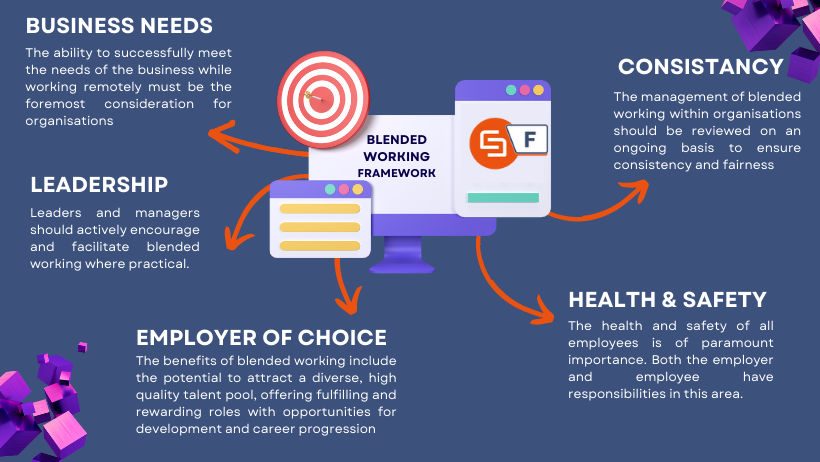
Sample principles of blended working
Once you have decided the rules of who can work from home and who approves it, you will need to design a method to enable employees to apply for blended working. The method will also require a way for managers to efficiently approve and track who is working from home and when.
Sintel has created a free app to make the process of approving employees to work from home and track who is working from home as easy as possible.
The app has been created using our two products: Sintel Forms and Sintel BI.
The first element consists of a Workstation Pre-Assessment Form and a Health & Safety Self-Assessment. These are built using Sintel Forms.
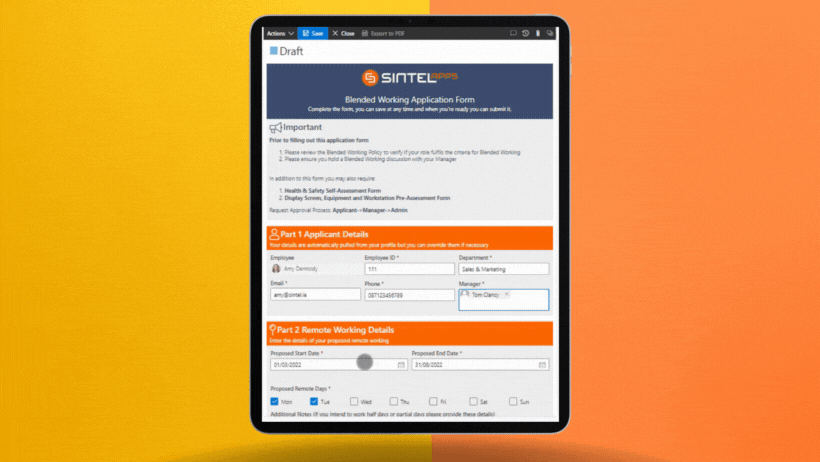
Form
The second element of the app is the dashboard interface built with Sintel BI.
This consists of a dashboard with all of the individual employees’ requests, and a dashboard for the approvers/managers to see all requests submitted.
There is also a stylish home screen with links to information and policies regarding blended working, as well as the forms necessary to fill out to apply for blended working.
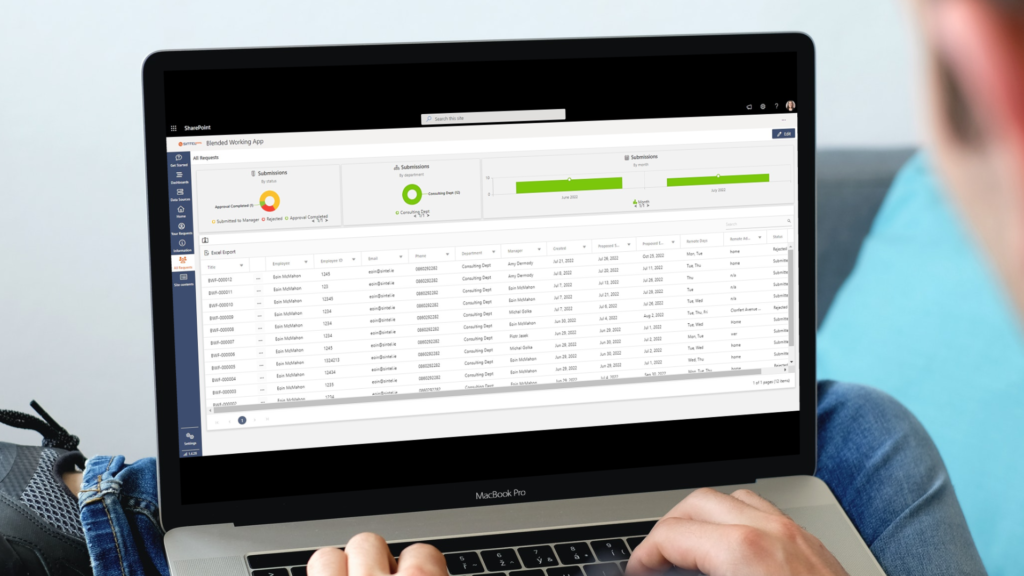
Dashboard
This entire app template is available to download for free here.
If you want to take a closer look at how the app is designed, keep reading!
The Forms
The Blended working Application Form enables employees to submit online requests for working from home.
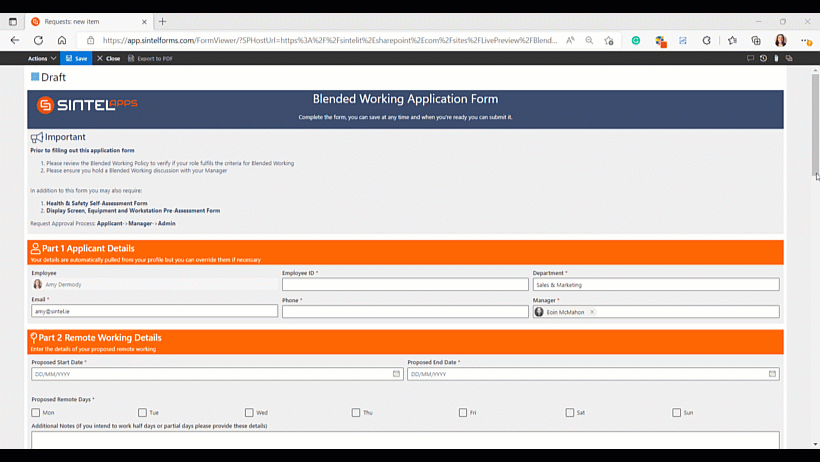
Blended Working Application Form
The form consists of five parts all of which can be customised depending on your businesses needs:
Part 1
Applicant Details – It is a Smart Form so any information such as the employee name, manager name, email and department will be pulled into the form automatically.
Part 2
Working details – This includes information such as proposed dates for remote working and the address they intend to use for remote working.
Part 3
The Business needs and Role suitability questions help determine if the employee’s role is suitable for working remotely.
Part 4
The Equipment requirements section lets the business know what equipment they need to provide the employee with.
It can be set up so that once the employee is approved for blended working, those in charge of equipment will be automatically notified as to what equipment is required.
Part 5
The applicant declaration is simply the terms and conditions which must be read and accepted.
Once the employee has submitted their form their manager will receive an email with the form. Once the form is manager approved it will be sent to an approval admin such as the head of the department. When the form is approved by the right people, the employee will be able allowed to work from home.
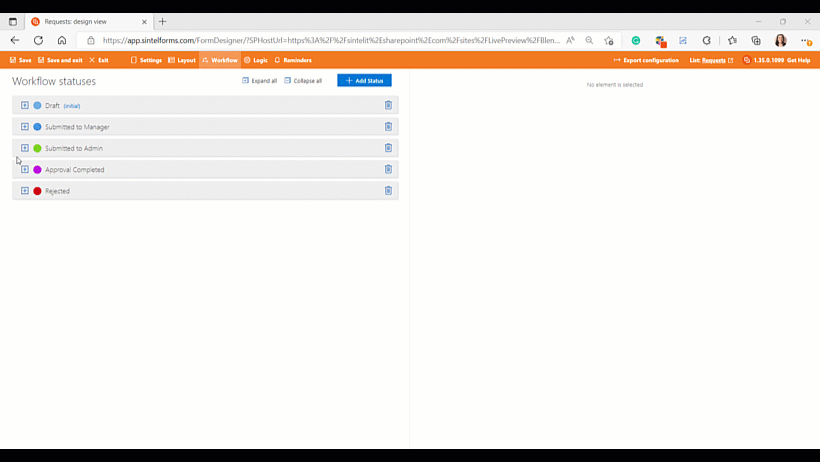
Workflow with email notifications for manager and approval administrator
Who the form is sent to for approval and when all depends on your business’s blended working policies and framework. This is all customisable within the Workflow of the Sintel Forms designer. It works based on the status of the form. You can decide that if the form is in status X, person Y is notified.
The Health & Safety Self-Assessment Form is the second form which needs to be completed as part of the process for applying for blended working. The responses given will be used to determine employee suitability for working remotely.

Health & Safety Self-Assessment Form
Similar to the first form, the Health and Safety form pulls in the users’ details to make filling out the form as quick as possible.
It then has tabbed sections with questions relating to the employee’s workstation, chair, screen, communications, keyboard & mouse, light, heat & electricity, personal wellbeing and a declaration used to confirm the responses are accurate.

Dashboard
The Dashboard
The second element to the blended working app has been created on Sintel BI.
It consists of:
- A stylish Home screen with links to information and policies regarding blended working, as well as the forms necessary to fill out to apply for blended working.
- An All Requests Screen to which only managers/approvers have access to. This shows all blended working requests submitted.
- A Your Requests dashboard which shows an employee their personal requests submitted.

Home screen and Requests dashboards
These dashboards were created by adding the SharePoint lists that work in the background of the Workstation Pre-Assessment Form and Health & Safety Self-Assessment as data sources on Sintel BI.
We could then drag and drop various charts onto our dashboards such as doughnut charts, bar charts and grids.
The last step was to connect the data source to the charts.
The outcome was some very stylish, easy-to-understand dashboards for the end user.
Want to download this app?
If you have already added Sintel BI into your tenant you can download this app and then follow the instructions to import the app.
If your business is interested in solutions like this, feel free to reach out to us via our website chat or book a no-obligation demo of our Sintel Apps platform.
You can also drop us an email at info@sintelapps.com or give us a call on +353 (0) 21 234 8817.
For the latest updates follow us on LinkedIn/Twitter & YouTube.




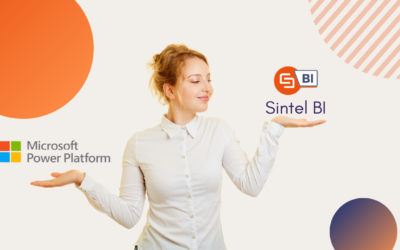
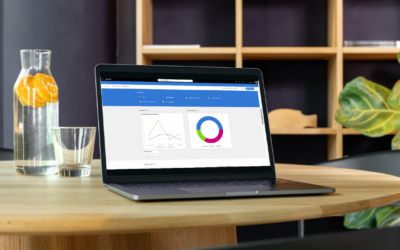

0 Comments